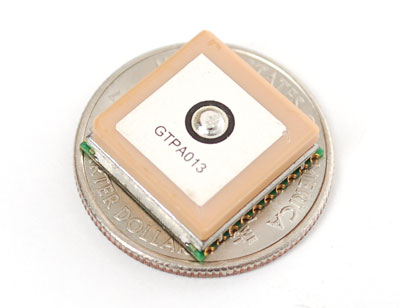XrayLizard
Well-Known Member
Derek, thanks for your work, got my gps/tx talking to the xbee on the pc's usb. really neat.

Derek, thanks for your work, got my gps/tx talking to the xbee on the pc's usb. really neat.
It came about from a lot of testing. We got too many lost packets on the standard 900Mhz Xbees at 115200, and the telemetry team said they didn't need any faster speed than 57600, which is more reliable. We used to run them even slower at 38k, but after a lot of field trialing felt comfortable enough to raise that.
Standard GPS NMEA output is even lower : 4800 bps.
Fastrax UP501 default firmware configuration:
Port 0: NMEA 9600 baud
Finally got my antenna in (that took fooooorever) so I could finally test out the system.
I haven yet to solder he jumpers on the TX as I'm waiting to make sure I have the radios set how I want. I was doing some research on youtube about how to configure them and I one of the videos I came across talked about the baud rate. He said the higher you set the baud rate the less transmit distance you will get between the radios.
Some more googling brought me to a drone forum and they use xbee radios as well. A quote from there:
and
So I checked out the data sheet for the GPS:
So was there a technical reason that it is suggested to bump the baud rate up on the radios all the way to 115200?
You are confusing two different data rates - the air rate and the interface rate. The air rate is fixed depending on which firmware you are running on the xbees. The interface baud rate controls the speed the external serial interface runs at.
You need to read the posts more closely. I tell you you need to change the baud rate of the Rx xbee to 115200 to match the BT module. The tx xbee stays at 9600 to match the GPS. Devices talking to each other need to match.
You'll have to read the data sheets to figure out what the air rate is based on the firmware.


Any updates on the new (smaller) board? I have a couple of smaller projects in ind these would be perfect for, but only if the range is still as good as the full sized tracker.
Hi, sorry for perhaps asking a silly question.
Is IOS still a no?
Is this allowed in the UK?
Do you offer it as full blow kit with it all included?
What about using on a laptop. Tether laptop to smartphone over wifi for cellular access to get map. BT or USB to the receiver?
Thanks.
Sent from my iPhone using Rocketry Forum
I have all the parts and pieces for the current version, will I be able to use those with the new smaller board or will there be a different parts list?


Finally finished assembling my transmitter. Huzzah! I'm able to see NMEA data sentences on my laptop (receiver radio plugged into the USB and using Putty to monitor COM port). It's awesome! I can't believe I actually soldered those tiny parts, but I did. This was a great learning experience as well as a useful tool.
This tracker will get mounted to a nose cone sled (with support for the antenna). I would like to build one of the smaller transmitters too, so please shout when the boards are available for order on oshpark.
Thanks again for sharing this design!
View attachment 165376
Cheers!
https://www.buildyourowndrone.co.uk/ArduPilot-Xbee-Telemetry-kit-2-4-GHz-p/tel-kit.htm
They offer this kit but have spoken with and the can make me a custom setup and test it for me.
I hope i got it right
2 of these https://www.buildyourowndrone.co.uk/XBee-PRO-RF-Module-RPSMA-S1-p/xbee-rpsma.htm
1 of these https://www.buildyourowndrone.co.uk/XtreamBee-USB-Adapter-p/tel-xbeeusb.htm
I have 2 of these laying about already https://uk.tp-link.com/products/details/?model=TL-ANT2408CL
Am i right?
Very nice, Gene!
I'm hoping to test the new mini tracker this weekend. We'll see.
edit:
I meant to add I see you used the battery connector. How does it work? That is the first pic of seen of someone using it.
I'm confused about what you are attempting to do. It isn't clear what those xbee carrier boards are for. Also, your 2.4 ghz xbee modules probably won't have the same range as the 900 mhz ones my tracker uses.
Europe's equivalent to 915 mhz is 868 mhz.
https://www.digi.com/products/wirel...dules/point-multipoint-rfmodules/xbee-pro-868
also diig's 868 module is higher power than the north american version (315mw vs 250mw).
Make me a unit dude that I can run the ground station on USB please?
Sent from my iPhone using Rocketry Forum
already done. just buy a xbee to usb adapter. I list a couple on the first page of this thread.
That would mean I only need you tx board then and a gps.
Sent from my iPhone using Rocketry Forum
Yes that is correct.
Sent from my iPod touch using Rocketry Forum
Enter your email address to join: